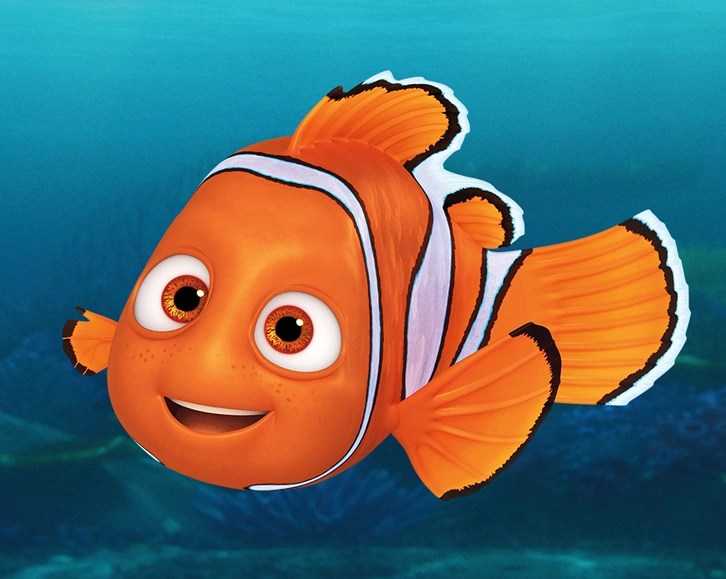Nemo Pics: Capturing The Magic Of Clownfish In Stunning Detail
Nemo pics have become a popular subject for photographers and marine enthusiasts alike, capturing the vibrant beauty and unique characteristics of clownfish. These delightful creatures, known for their striking orange and white coloration, have enchanted people around the globe. In this article, we will explore the fascinating world of clownfish photography, the best techniques to capture them in their natural habitat, and tips for sharing your own stunning nemo pics.
In addition to technical guidance, we will also discuss the importance of ethical photography practices and conservation efforts to protect the delicate ecosystems where clownfish thrive. As you embark on your journey to create captivating nemo pics, it is essential to consider the impact of your work on the environment and the preservation of marine life. Let's dive deeper into the vibrant world of clownfish photography!
Table of Contents
- 1. Introduction to Clownfish
- 2. The Anatomy of Clownfish
- 3. Best Locations for Capturing Nemo Pics
- 4. Techniques for Photographing Clownfish
- 5. Ethical Photography Practices
- 6. Editing Your Nemo Pics
- 7. Sharing Your Work
- 8. Conclusion
1. Introduction to Clownfish
Clownfish, or nemo, are small, colorful fish belonging to the family Pomacentridae. They are primarily found in the warm waters of the Pacific and Indian Oceans, inhabiting coral reefs and anemones. The relationship between clownfish and sea anemones is a remarkable example of symbiosis, where both species benefit from each other.
Clownfish are best known for their vibrant orange and white coloration, which provides them with camouflage among the tentacles of sea anemones. Their unique appearance and playful behavior make them a favorite subject for photographers and marine life enthusiasts.
2. The Anatomy of Clownfish
Understanding the anatomy of clownfish can greatly enhance your photography skills. Here are some key features to look for when capturing nemo pics:
- Coloration: The bright orange hue with white bands is iconic to clownfish.
- Body Shape: Clownfish have a rounded body shape, which adds to their charm.
- Fins: Their dorsal and pelvic fins are often brightly colored and help in maneuvering through anemones.
- Behavior: Observing their playful interactions with anemones can lead to unique photographic opportunities.
3. Best Locations for Capturing Nemo Pics
Choosing the right location is essential for capturing stunning nemo pics. Here are some of the best places to find clownfish:
3.1 Coral Reefs
Coral reefs provide a natural habitat for clownfish, making them ideal for photography. Places like the Great Barrier Reef in Australia and the Coral Triangle in Southeast Asia are renowned for their rich biodiversity.
3.2 Anemone Gardens
Look for areas with abundant sea anemones, as clownfish are often found residing within them. These gardens are perfect spots for capturing the unique relationship between clownfish and their anemone hosts.
4. Techniques for Photographing Clownfish
To capture stunning nemo pics, consider these photography techniques:
4.1 Use of Macro Lenses
Macro lenses allow you to capture intricate details of clownfish, such as their scales and bright colors. This can create visually striking images that highlight their unique features.
4.2 Focus on Composition
Composition plays a crucial role in photography. Utilize the rule of thirds to create balanced and engaging images. Ensure that your subject is well framed within the shot.
5. Ethical Photography Practices
As a photographer, it is essential to prioritize the well-being of marine life. Here are some ethical practices to consider:
- Avoid disturbing the natural habitat of clownfish.
- Maintain a safe distance to prevent stress on the fish.
- Do not touch or remove any marine life from their environment.
6. Editing Your Nemo Pics
Editing can enhance the quality of your nemo pics. Here are some tips for editing underwater photographs:
- Adjust the contrast to bring out the colors of the clownfish.
- Use color correction to compensate for the loss of color underwater.
- Crop images to improve composition and focus on the subject.
7. Sharing Your Work
Once you have captured and edited your stunning nemo pics, it's time to share them with the world. Here are some platforms to consider:
- Social Media: Platforms like Instagram and Facebook are great for showcasing your work.
- Photography Websites: Consider submitting your photos to marine life and photography websites.
- Personal Blog: Create a blog to share your experiences and photography tips.
8. Conclusion
In conclusion, capturing nemo pics is not just about taking beautiful photographs; it's about understanding the unique behaviors and environments of clownfish. By using the right techniques, practicing ethical photography, and sharing your work responsibly, you can contribute to the appreciation and conservation of these remarkable creatures. So grab your camera, explore the underwater world, and start capturing the magic of clownfish!
We encourage you to leave a comment below, share your own nemo pics, or ask any questions you may have. Don't forget to check out more articles on our site for tips and inspiration for your photography journey!
Thank you for reading, and we hope to see you back soon for more insightful articles and captivating photography tips!
Kristina Kennedy: The Rise Of A Social Media Influencer
Lala 1987: The Journey Of A Cultural Icon
Deborra-Lee Furness Young: A Journey Through Her Early Life And Career

Populer 34+ Ikan Nemo

Nemo Jack Miller's Webpage of Disney Wiki FANDOM powered by Wikia

Finding Nemo Official Site Disney Movies